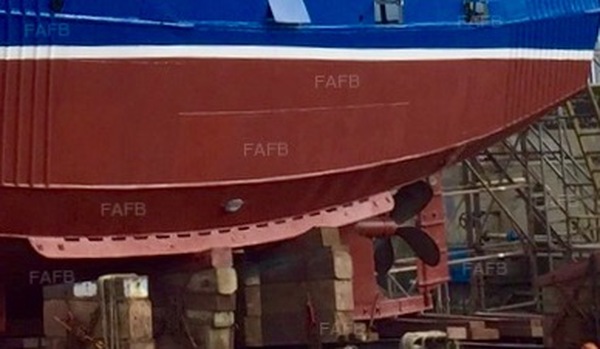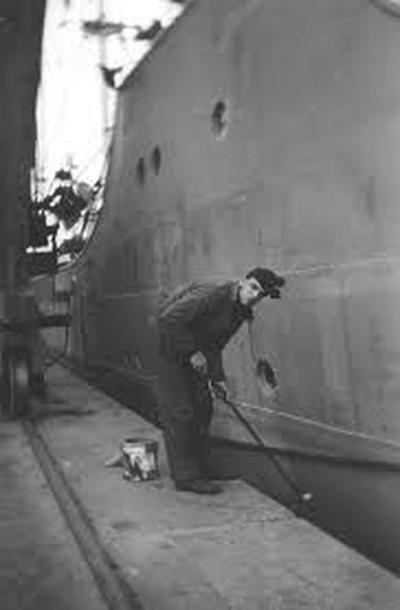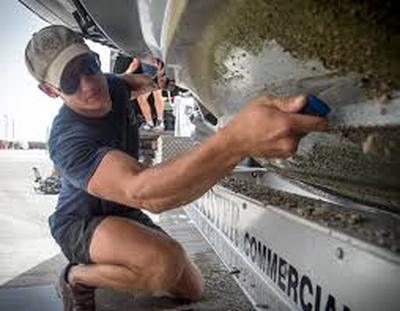
View all banners
FAFB will never call you and ask for your credit card details over the phone. If this happens, hang up!


Protecting the hull of your vessel is an essential part of the routine maintenance required to keep your boat in good service and applying some form of anti-fouling is inescapable to do so. But why do you need to protect against fouling, what is it and what are the options for doing so?

The term given to the growth of organisms on a boats hull, fouling (or biofouling consists, in the main, of algae, barnacles, weeds and plants. Building up over a period of time, these parasitic marine creatures can interfere with the performance of the hull whilst in the water and decrease the life of the underlying material. Anything which comes between the design of the vessel’s underside and the water will cause drag and thus reduce the speed of the boat. In addition, fouling prevents the necessary treatment of the hull to protect it and some forms of growth can even cause damage as it bores into the ship’s underside.Buy antifouling now

It is a common sight, prior to the summer season, for harbours and boatyards to be littered with busy crews preparing their vessels for the application of anti-fouling paints. Designed to prevent the build up of marine organisams many modern products also offer additional additives which purport to give the boat a more dynamic stream line capability or offer anti-corrosion. The main active ingredient in most anti-fouling paints is copper and biocides to discourage sub-aquatic growth on the hull. In recent years, further research into new technologies has resulted in new products on the market including Teflon, fibre and silicone coatings. The SealCoat system, for example, is formed with small fibres which make it virtually impossible for any marine organism to attach itself to the hull.
Long gone are the days when wooden ships like the Cutty Sark would use great sheets of copper be nailed to the hull. Buy antifouling now

Forty or fifty years ago much of the paints available on the market contained highly toxic chemicals such as tributyltin that were found to be harmful to marine life and subsequently banned. In recent years, further scrutiny into the common practice of using copper-based products has resulted in new legislation to ban even this ingredient. In Washington State, US there is a plan to wholly ban the use of copper-based applications for anti-fouling systems which is due to be phased in over a period of time commencing January 2018 and, initially, covering recreational vessels.
Europe has not been immune to these kind of laws but, after inconclusive research failed to support the move, a similar ban was recently rescinded.
Manufacturers are aware of the increased pressure from environmentalists and have been increasingly looking towards new technology to offer greater, safer and cheaper protection as viable alternatives to copper-based paints.
The motivation to be first to market with suitable offerings has sparked a race with several new products available or in the pipeline which look set to be both practical and cost-effective.
Trialed in several larger fisheries a self-adhesive foil has been found to produce good levels of success in anti-fouling. Covered by tiny fibres, the foil prevents organisms from adhering to it.
Silcone applications are now commonly available and provide a non-stick surface upon which it is more difficult for marine growth to establish itself. This also applies to Teflon based coatings.
Companies like Dow have recently had their anti-fouling paint globally approved as being environmentally friendly and contains a biocide to prevent fouling.
Thinking outside of the box, one manufacturer has developed a blend of silver and copper which is sealed in a hybrid epoxy resin and therefore prevents bleeding of copper to the marine environment. Though it is not compatible with aluminium hulls the paints are proving popular not least of which because a single coat can last up to ten years.
Some products are still in the design stages with Swedish manufacturer, i-type, working on the compound medetomidine as an alternative application. A veterinary medicine, i-type has discovered that it also provides a protective barrier to prevent barnacle growth from forming. Research into enzymes as a way to dissolve the substance used by marine life to adhere itself to the hull is at an advanced stage.
Studies in Australia have shown strong evidence that extracting furanones from red seaweed can interfere with the communication between bacteria at a molecular level and is effective at reducing fouling. The hope is that by using the plant as a natural barrier the environmental impact of anti-fouling could be greatly reduced. It’s a radical approach and further research is needed into the durability of such a method and the impact on the vessels drag. It is more likely that we will first see a traditional paint form application which incorporates these compounds.
On a similar spin to the idea, a mesh design which covers the hull entirely and which reacts with water to create a type of slime would solve the problem by sloughing off over a period of time. By shedding its protective layers in this way, barnacle larvae and other organisms would simply fall away from the hull instead of having a chance to grow.
You should regularly check the hull with the expectation of applying a coat of anti-fouling each year with a full strip-job being required every four or five years. However, some applications erode naturally and do not require you to undertake the arduous task of stripping away the previous coats.
A big job, stripping the hull should be undertaken when you can see ragged edges where paint is peeling away and deep craters are appearing as well as blistering of the paint where trapped water is forming.
You can scrape away the layers of paint by soda-blasting, chemical scraping or by hand but the good news is that the more layers of paint that have been built up the easier they are to remove.
Whichever method you choose, you should always scrape back as soon as you can once the boat has left the water. This way the marine growth is softer and easier to remove. Take the hull back to its bare surface before priming and applying your chosen paint according to the manufacturers instructions. Silicone based paints initially require a two coat application on a bare hull but most will require a single but thorough coat.
We have a good range of products available to buy through our advertisers so be sure to browse through our directory of services here
